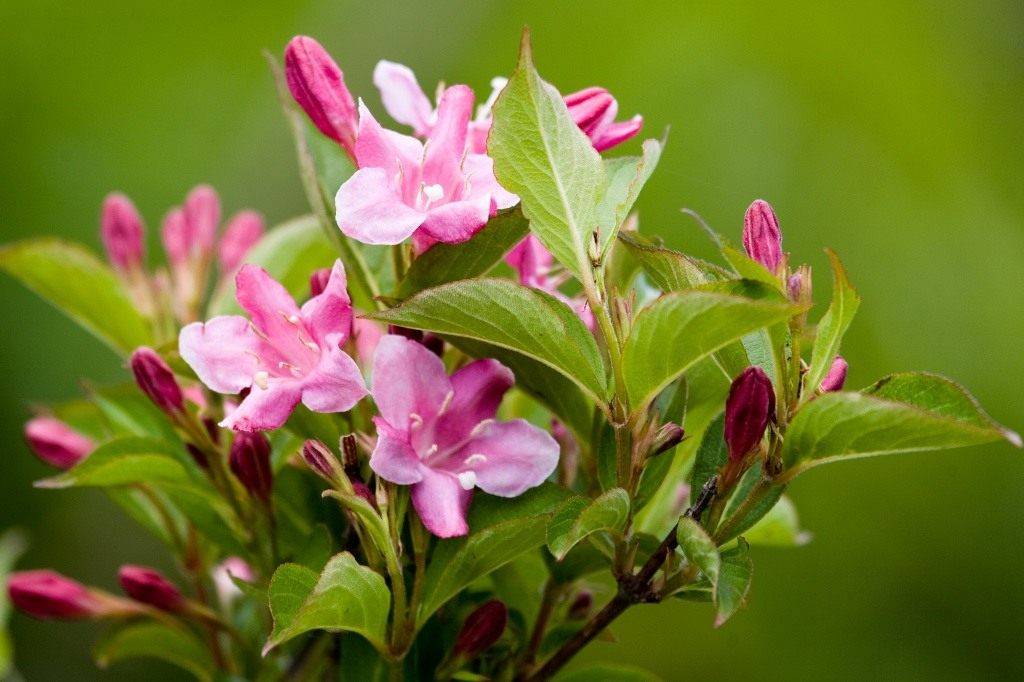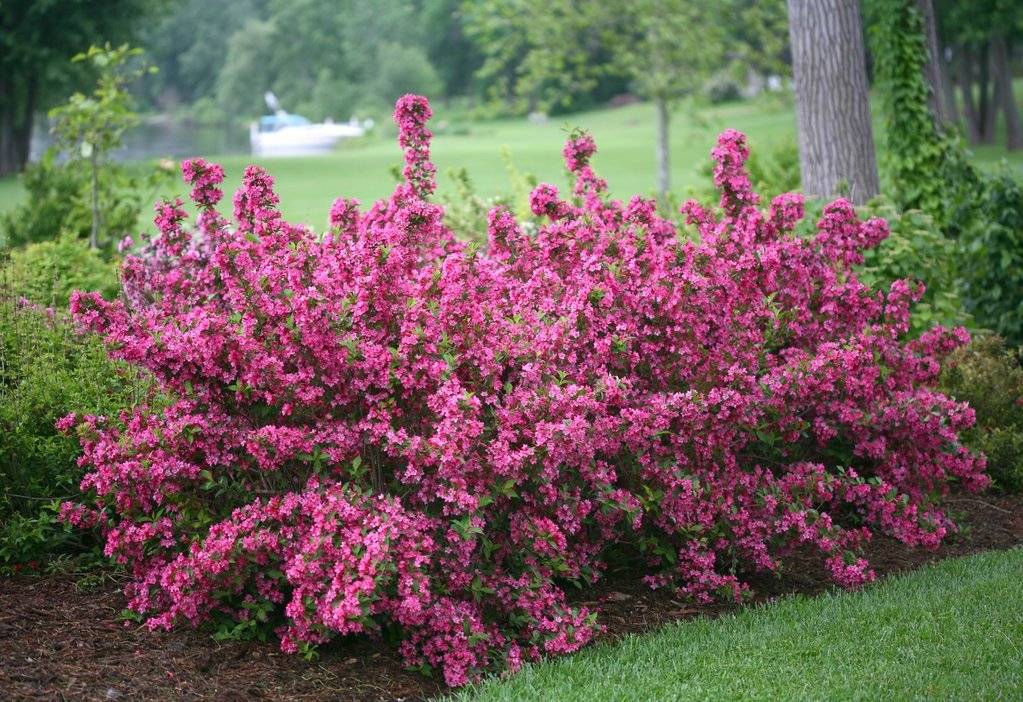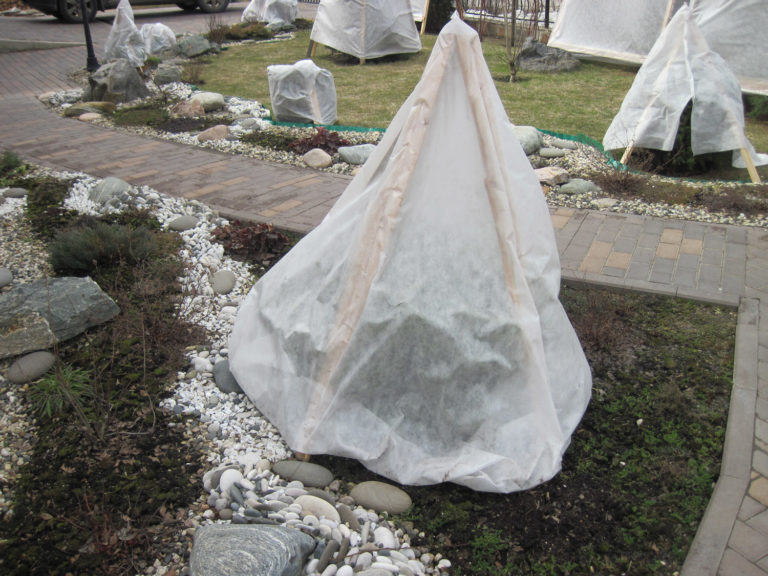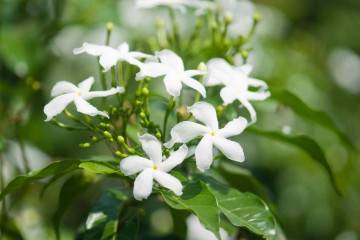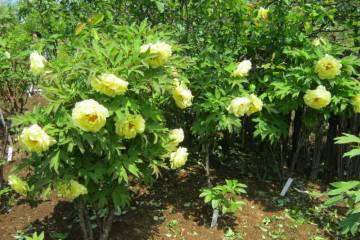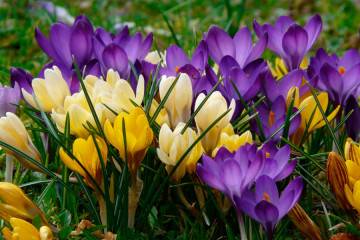Weigela shrub - ornamental flowering plant for the garden
Content:
For the successful cultivation of any ornamental plant, including weigela, you need to know the peculiarities of caring for it and how to reproduce it. This will help you better plan your garden plot and decorate it.
Weigela shrub - ornamental flowering plant for the garden
Weigela is a shrub often used in landscaping for its unusual colors. The bell-shaped buds cover the plant almost completely, serving as an excellent backdrop for various garden compositions.
Origin and appearance
The plant was named after the professor of botany and chemistry Christian Ehrenfried von Weigel. It was this scientist, who was the director of a botanical garden in the German city of Greifswald, who discovered the shrub in the 19th century. Its other name is Virgilia divaricata or spread out virgil.
The erect weigela bush reaches a height of 1.5-3 m, depending on the variety. Green or reddish leaf plates have an elongated shape with pointed tips. The flowers are large, funnel-shaped, painted in white, pink or red.
Flowering description
Virginia shrub blooms twice a season. The first wave of opening of the buds falls on May-June, the second one - in August-September. Autumn bloom is less abundant than spring bloom.
Flowers are formed on the shoots of the last year. In spring, the corollas bloom even before the leaves appear, right on the bare branches.
Landing after purchase
This should be done in the spring, when the threat of frost has passed.
Preparing for landing
For the procedure, it is necessary to prepare gravel and sand, which will be used as a drainage layer. To improve the quality of the soil, you need:
- humus;
- compost;
- complex fertilizer for ornamental shrubs.
Saplings should be carefully examined and non-viable roots should be removed by sprinkling them with crushed coal.
Choosing the best place
It is recommended to place the weigela on a hill, protected from drafts and gusts of wind. The best option is on the southern side of the site, slightly shaded from the direct sun. The soil in the chosen location should be loose and nutritious.
Step-by-step planting process
Seedlings are placed in the selected area in accordance with a certain sequence. They act in this way:
- Dig a hole 2 bayonets deep and 50 cm in diameter. If there are several seedlings, then they are located at a distance of 70-80 cm from each other.
- A drainage layer is poured into the hole, fertilizers are poured onto it mixed with earth.
- The seedling is placed in a hole, the roots are straightened and sprinkled with soil.
- The soil is lightly compacted by hand and watered abundantly.
It is recommended to form a trunk circle around the plant.
Reproduction
Growing weigela seedlings is too laborious. The shrub can be propagated by cuttings or transplanting self-sown shoots.
Propagation by cuttings
For rooting, you should choose green and lignified shoots. Cuttings 15 cm long are cut in the spring, until the buds have time to swell on the branches. The lower cut is kept for an hour in a growth stimulator and placed in a soil mixture of sand and peat soil. The stalk is buried 1 cm and a greenhouse is installed above it.
The young plant is provided with regular watering and ventilation. The roots of the seedling will appear in about 1-2 months.
Care
The weigela shrub, planting and caring for which is quite simple, accepts conventional agrotechnical procedures well. To get a luxuriously flowering plant, it will need to provide good lighting and sufficient air permeability of the soil.
Watering mode
Virgil shrub does not tolerate excessive moisture, it will have to be watered only during severe drought. After the topsoil has dried, it is recommended to mulch the trunk circle to maintain the natural moisture level.
Top dressing
For abundant flowering, the plant needs timely feeding. The applied formulations must be rich in mineral and organic substances. If, when planting a seedling in the ground, it was sufficiently enriched with fertilizers, then the next procedure is carried out no earlier than after 1.5-2 years.
At the beginning of each season, the plant needs preparations containing phosphorus, potassium, nitrogen and magnesium. You can use ready-made complexes for flowering garden plants and ornamental shrubs.
Features of care during flowering
Regular fertilization of the shrub during this period will allow it to bloom profusely, and the buds will differ in color saturation and large size. It is also necessary to constantly loosen the soil in the trunk circle and remove weeds so that the roots receive enough air and nutrition. This is an additional prevention of fungal diseases.
Weigela has a tendency to shed the buds when too strong gusts of cold winds. To protect the plant, experienced growers set up a fence from the north of the shrub. It consists of two vertical supports and a canvas stretched between them.
Features of care during rest
When the plant is resting, they try not to disturb it, limiting themselves to weeding and loosening the soil. And even these procedures are carried out very carefully so as not to harm the delicate roots located close to the surface. In the spring, when the bush has not yet bloomed, and after flowering is complete, formative pruning is carried out, slightly shortening the branches.
Preparing for winter
Perennial verginia is a thermophilic shrub and requires shelter for the winter. To preserve the plant in frosts, it is spud up to a height of 20 cm in autumn, the branches are bent to the ground and tied with twine. A frame shelter is installed above the fixed shoots.
Weigelu can be called a relatively undemanding plant. If you regularly look after and take care of it, then it will respond with abundant flowering. The shrub will ennoble the garden and delight the grower with large bright flowers.
